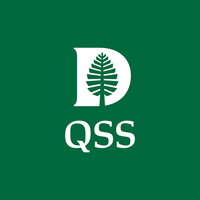- Undergraduate
- Research
- About the Program
- News & Events
- People
Back to Top Nav
Back to Top Nav
Back to Top Nav
Back to Top Nav
Purdue University Anthropologist Erik Otárola-Castillo, will discuss using 3D Geometric Morphometrics and Bayesian to assess ancient human butchery behaviors

Studies of cut marks and other bone surface modifications (BSM) caused by butchery are crucial to our understanding of human and earlier hominin subsistence behavior. Over the last several decades, however, BSM identification has remained contentious, particularly in terms of identifying the earliest instances of hominin butchery; there has been a lack of consensus over how to identify or differentiate marks made by human and non-human actors and varying effectors. Most investigations have relied on morphology to identify butchery marks and their patterning. This includes cut marks, one of the most significant human marks. Attempts to discriminate cut marks from other types of marks have employed a variety of techniques, ranging from subjectively characterizing cut mark morphology using the naked eye, to using high-powered microscopy such as scanning electron microscopy (SEM) or micro-photogrammetry. Recent approaches use 3D scanning to obtain detailed information about the marks, and apply those to the fossil record. Although 3D datasets open promising new avenues for investigation, analyses of these datasets have not yet taken advantage of the full 3D surface morphology of BSM. Rather, most use selected cross-sectional slices of 3D scans as proxies for overall shape. Here, I develop new 3D geometric morphometrics (GM) methods coupled with a Bayesian approach to probabilistically discriminate between marks caused by different butchery behaviors. At the same time, this approach provides a complete set of 3D morphological measurements and descriptions. Results strengthen statistical confidence in cut mark identification and offer a novel approach that can be used to discriminate subtle differences between cut mark types in the fossil record. Furthermore, I provide open source easy to use software with which to make future quantitative comparisons between experimental and archaeological examples, including contentious specimens that are key to understanding the earliest hominin butchery.
Events are free and open to the public unless otherwise noted.